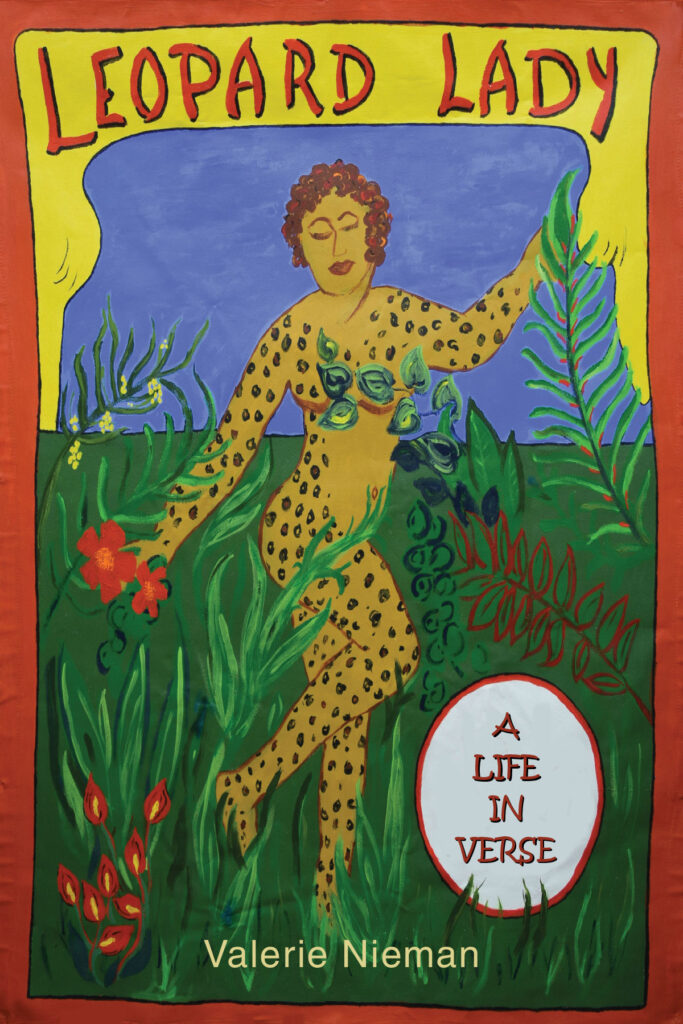Editor’s Note: This exchange is part of a series of brief interviews with emerging writers of recent or forthcoming books. If you enjoyed it, please visit other interviews in the I’ve Got Questions feature.
- What’s the title of your book? Fiction? Nonfiction? Poetry? Who is the publisher and what’s the publication date?
Leopard Lady: A Life in Verse
Poetry
October 2018
- In a couple of sentences, what’s the book about?
In midcentury America, two seekers find their way to a traveling show and an unfolding social, cultural, and spiritual awakening. Dinah, the Leopard Lady, flees a Dickensian childhood as an orphan in Depression-era Appalachia, rising above abuse and abandonment to find self-awareness and even love, while Jonathan, the Professor, mirrors her story as a fellow runaway, wounded in body and spirit, who finds a refuge in the sideshow.
- What’s the book’s genre (for fiction and nonfiction) or primary style (for poetry)?
As a novel-in-verse, it is of course narrative overall, with an arc covering several decades, but there are quite a number of purely lyrical poems as well, particularly Dinah’s responses to nature.
- What’s the nicest thing anyone has said about the book so far?
I had several truly lovely blurbs, for which I’m deeply grateful, but I’m always gobsmacked by a great review. “Dinah the Leopard Lady is after big things,” wrote Marly Youmans in the North Carolina Literary Review. “She splits open the world like a piece of fruit to get at the seeds of meaning…Dinah’s eagerness to eat the world (material and metaphysical) to its rind is her strength.” And Lisa Schaefer, the curator of the Coney Island Museum, commented: “Steeped in sideshow tradition, and addressing issues of race, gender, self-concept, and creative expression, your book is beautifully written.”
- What book or books is yours comparable to or a cross between? [Is your book like Moby Dick or maybe it’s more like Frankenstein meets Peter Pan?]
I don’t think it’s really like anything, though I can trace threads in journey-tales from Piers Plowman to Huckleberry Finn.
- Why this book? Why now?
I did not choose this book; it chose me. I was working in my journal one night when this voice began, strong and sure, a voice with Appalachian cadences telling a powerful story. I scribbled as fast as I could for as long as she spoke, 13 pages that included three poems almost whole and chunks of several more. But enthralling as this visitation was, I also had a strong impulse to turn away from it. Why me? Why now? Dinah slowly revealed her identity as a biracial woman from an era before mine. The carnival she called home was an alien world I’d seen only superficially. And so I focused on other projects, novels and other kinds of poems, but Dinah remained in my mind until I sat down and finished telling her story. With the last poem, that voice was gone, never to return.
- Other than writing this book, what’s the best job you’ve ever had?
It wasn’t a job, or at least a paying one, but I loved operating a small farm in West Virginia. Half a dozen beef cattle, a small orchard, berries, asparagus, herbs, and organic veggies. A wonderful part of that life was spending time in the woods, whether to gather berries or collect firewood or just wander.
- What do you want readers to take away from the book?
There are so many threads in Leopard Lady. I think readers come to this book, any book, and find what they need in its pages. This is a story of revelations and redemptions, a story about claiming your own self, at last, with neither shame nor pride.
- What food and/or music do you associate with the book?
Carnival food, of course! Candy floss (cotton candy) and funnel cakes and lemonade and wonderful greasy sausage sandwiches dripping with fried onions and peppers. Dinah also recalls her childhood helping put up food on the farm, from pickles to peaches to apple butter. She seeks out mayhaw jelly for The Professor, a folk remedy for heart problems which has scientific underpinning.
A playlist would be interesting to construct. Dinah was raised in a strict fundamentalist household in Appalachia, so hymns, probably unaccompanied, possibly even in the shape-note style. Once she joins the carnival, she would have been exposed to music of the day, including crooners of the pre- and post-war eras, jazz, popular tunes, and “hillbilly.” The Professor grew up in a well-to-do Episcopalian family and studied for the priesthood, so he’d know church music of a different sort.
- What book(s) are you reading currently?
World of Wonders, Aimee Nezhukumatathil
The Penguin Anthology of 20th Century American Poetry, ed. Rita Dove
New Writing Scotland Vol. 38 (full disclosure: I have an essay included)
I Mean You No Harm, Beth Castrodale (this is an ARC)
Drowning in the Floating World, Meg Eden
Learn more about Val at her website.


